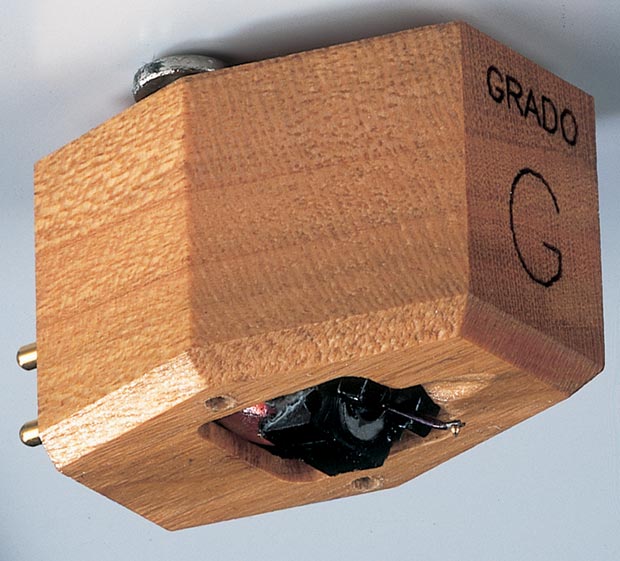Grado Platinum V2 Reference Vs Sumiko Blue Point
The Grado wood bodies
[I]'m coming back to the wooden body Grados, the Reference Platinum 1 in this case, after a 20-something-year hiatus. Disregarding the possibility of improvements in manufacturing and materials, would the cartridge sound the same to me? Would it have the same strengths and weaknesses? My original Grado Platinum was the first good cartridge I owned. After a disastrous relationship with a Sumiko Blue Point (original P-Mount version) and decent sound with a Stanton 881 mk IIs, the wooden bodied Grado was the first cartridge in my system to show the three-dimensional capabilities of vinyl. The Sumiko and Stanton did more to exacerbate the short-comings of analog, rather than accentuate the positive. With the Platinum, things began to shift. Finally, with the arrival of a DL103m and Altec Lansing step-up transformers, I finally had "high end" analog sound. The thing is, I probably never heard what the Stanton and Grado were capable of, due to some unfortunate equipment combinations.
Back then, my first tube phono stage was a used Lazarus preamp, using a 12AX7 for both phono and line stage. Besides having excessive amounts of noise due to very high plate resistance, the miller capacitance of the 12ax7 is an exceptionally high 100-175 pF causing a "high frequency shit storm" when used with a typical high output moving magnet cartridge. You also have to take account of the capacitance in the tonearm cable, input loading, etc. The high Miller Capacitance rolls off the highs, well below 20,000 Hz. It would be audible, if it weren't for a corresponding peak lower in the treble. This treble peak is caused by the combination of the high inductance of the cartridge coils and high capacitance of the cables/loading/12ax7. What you get is a cartridge that sounds very bright, but with no extension. By the way, this very problem is why they developed the tetrode and pentode, and chiefly for problems in RF work. The "screen" grid isolates the "control" grid and plate/anode, lowering the inter-electrode capacitance.
I thought it might be the Lazarus preamp, so I switched to a mint McIntosh MX110, and had the same problem. So, I assumed it must be due to the cartridges. When I started using moving coils, and heard much better high frequency performance, I assumed, wrongly, that it was because moving magnets were inferior. The truth was, the moving magnets needed correct loading, just like a moving coil. And, the truth was, most phono stages with a 12ax7 would always be too noisy and screw up the frequency response of most high output moving magnet cartridges. If you are saying, "but the Grado is a moving-iron, it is only a semantics thing," what causes the problem with moving-magnets, and moving-irons, is the coil built into the cartridge, which is roughly circular and made of copper wire, regardless of cartridge type, has a great many windings, which increases output, but it also increases the inductance of the coil. You can reduce the number of windings, and you will get better sound. The low-output Grado sounds significantly smoother and better extended than the regular-output Grados. Some of the best cartridges being made are the moving-irons by Peter Ledermann of The Soundsmith (Peter Ledermann). Without a doubt they prove that moving iron cartridges have no deficiencies in comparison to moving coils.
So, this serves as a word of warning, based on my own folly, that the cartridge itself isn't always to blame. In the recent review of the Audio Technica AT150MLX dual moving magnet cartridge, I knew that the "standard" loading of the phono stage was causing a slight peak in the treble, but I couldn't justify getting another phono stage just because a budget cartridge has inductance. If it was a $5,000 cartridge, then things would be different. When you get to that price, you should expect some special concessions to allow the cartridge to perform at its peak.
The Reference Platinum 1 sells for about $350 at millions and millions of retailers.
Enough of that, how does it sound?
moreaulithervithed.blogspot.com
Source: https://www.dagogo.com/grado-reference-series-platinum-1-cartridge-review/

0 Response to "Grado Platinum V2 Reference Vs Sumiko Blue Point"
Postar um comentário